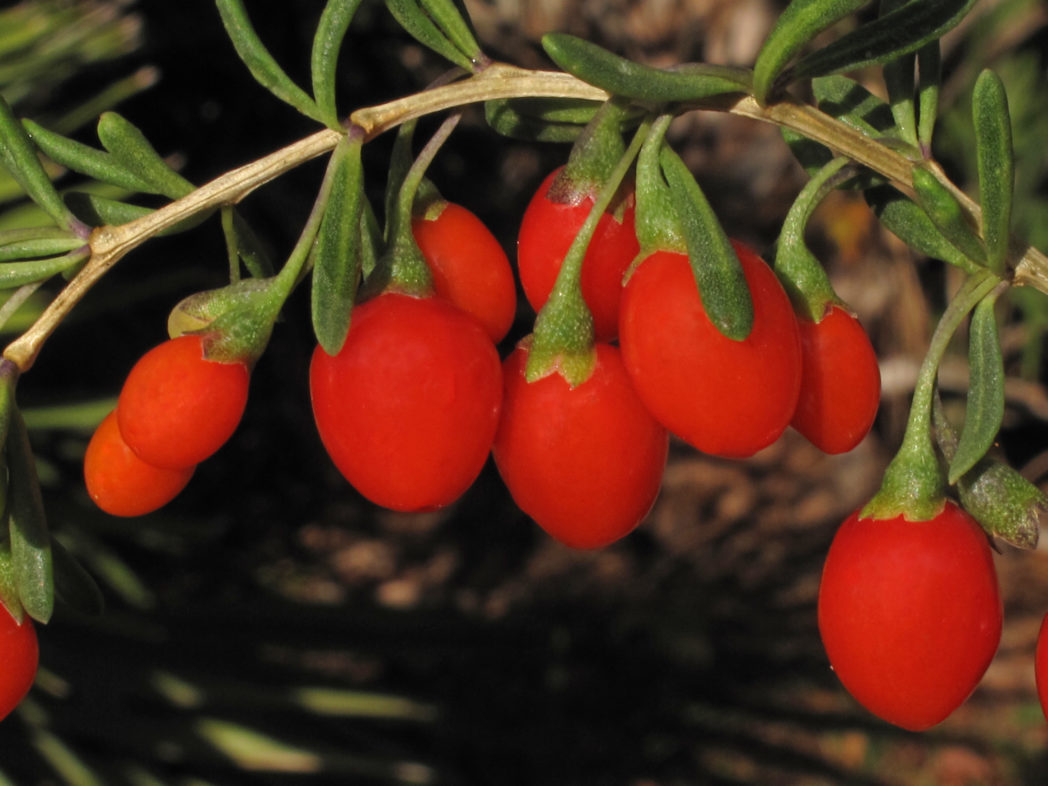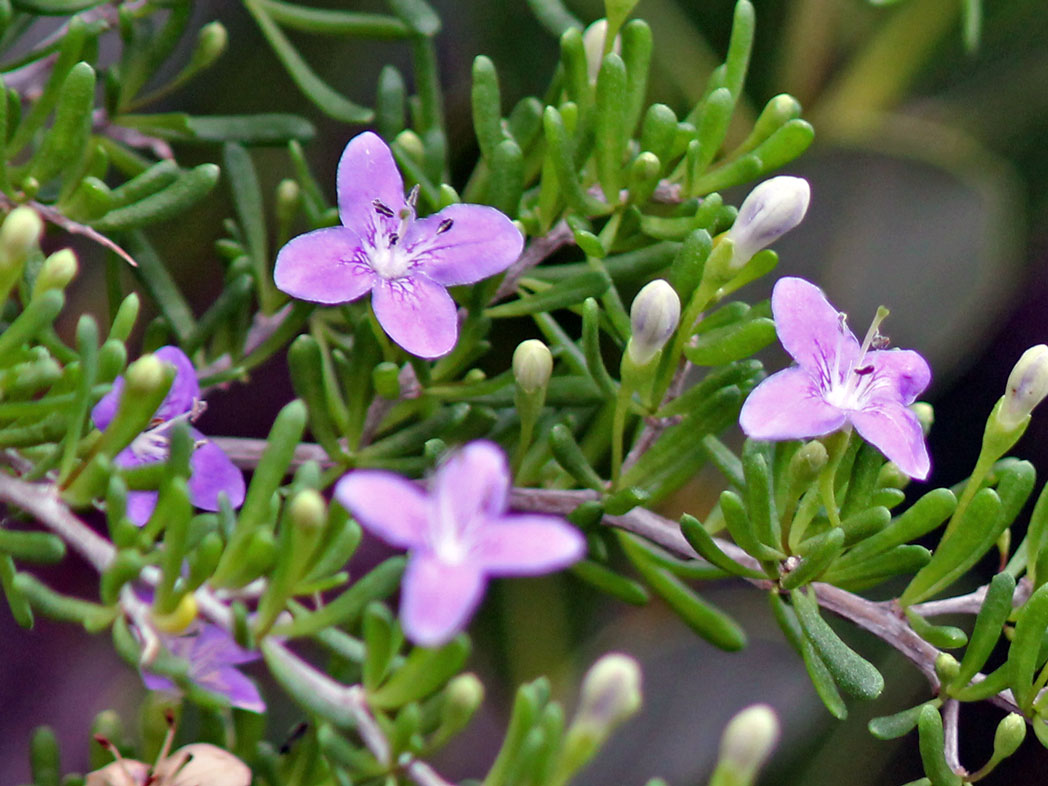Christmasberry
Pictured above: Christmasberry (Lycium carolinianum) by Mary Keim. Click on terms for botanical definitions. View post as a PDF.
Christmasberry is an evergreen woody shrub found along salt marsh and mangrove edges and on dunes in Florida’s coastal counties. The plant gets its common name from the scarlet red berries that appear abundance in December. While toxic to some animals, the berries are a favorite food source for many birds. Ripe fruits are edible to humans and may be consumed raw, dried or made into a tea. (Do not consume immature fruits.) Flowers typically appear in summer and fall, although some specimens can bloom intermittently throughout the year. The nectar-rich flowers attract a variety of butterflies, moths and bees. When not fruiting, the plant resembles a Calamintha or Conradina species.
Christmasberry’s solitary flowers are small (about 1/2 inch in diameter), 4- to 5-lobed and vary in color from deep lavender to bluish-white with white centers. Leaves are small, succulent, bright green and alternately arranged. They are linear to oblanceolate with entire margins. Branches are rigid and often armed with thorns. Fruits are green, egg-shaped berries that turn bright red and fleshy as they mature.

Photo by Alan Cressler, courtesy of Lady Bird Johnson Wildflower Center, taken at Cedar Key, FL
Christmasberry is a close relative of the Goji berry (L. barbarum, L. chinense). The plant is also known as Carolina desert-thorn, referring to the thorns occasionally growing along its branches.
Family: Solanaceae (Nightshade family)
Native range: Coastal counties from Bay and Duval south to the Keys
To see where natural populations of christmasberry have been vouchered, visit florida.plantatlas.usf.edu.
Hardiness: 8A–11
Soil: Moist, saline, sandy or calcareous soils
Exposure: Full sun to minimal shade
Growth habit: 3–6’ tall with 3–5’ spread
Propagation: Seed
Garden tips: Christmasberry is a wetland species that is highly salt tolerant. It is best suited for coastal landscapes, but is very adaptable and will acclimate to a variety of conditions. Its attractive evergreen foliage, charming flowers and showy fruits add year-round interest to a landscape while providing vital food and cover for wildlife. The plant works well as a specimen or en masse to form a hedge or buffer.
Christmasberry is often available at nurseries that specialize in native plants. Visit PlantRealFlorida.org to find a native nursery on your area.

